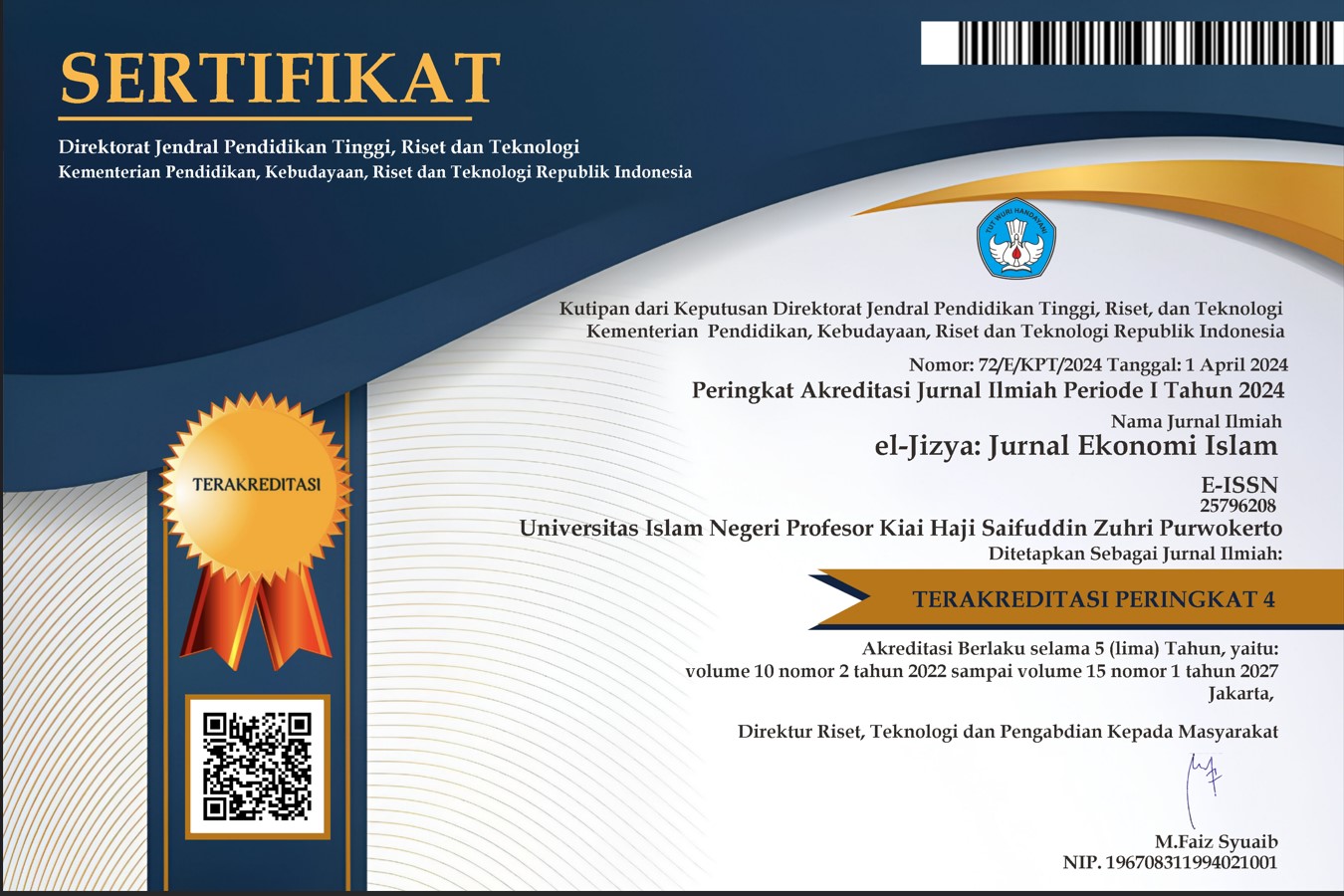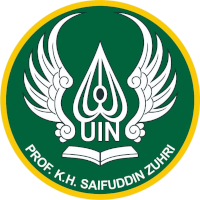Immaterial Cost and Production: Maximum Production Cost Level Through Marginal Approach
DOI:
https://doi.org/10.24090/ej.v8i2.4241Keywords:
Keywords: Immaterial Cost, Production Result, Marginal CostAbstract
This paper will discuss about the immaterial costs and production yields at one of the refined sugar factory companies in Makassar, South Sulawesi. The theory is based on the fact that Immaterial is a cost that is almsgiving, meaning costs that are outside of the basic costs of the company in producing production, so this research aims to find out: (1) what is the production cost needed to produce this production, (2) the maximum level of production at company from 2013 to 2017. This type of research is a quantitative study because it uses a questionnaire in the form of values ​​that are processed using the marginal cost approach formula. The results of the analysis show that (1) the maximum level of production costs occurred in 2016 amounting to 6,912 with an Immaterial cost of Rp. 2,481,796,800 and the total production produced is 359,077.3 tons (2) The required workforce with the total production produced is 359,077.3 tones of 180 people including the maximum production point which means that the lowest value is achieved (optimal).References
Amalia, M. N.-A. (2010). Teori Mikroekonomi: Suatu Perbandingan Ekonomi Islam dan Ekonomi Konvensional. Jakarta: Prenadamedia Group.
Bangun, W. (2010). Teori Ekonomi Mikro. Bandung: PT. Refika Aditama.
Idri. (2016). Hadis Ekonomi (Ekonomi dalam Perspektif Hadis Nabi). Jakarta: Prenadamedia Group.
Karim, A. A. (2011). Ekonomi Mikro Islam. Jakarta: PT. Rajagrafindo Persada.
Maftukhah, R. (2016). Pengaruh Biaya Produksi dalam Menentukan Harga Jual pada Pabrik Bantal dan Kasur Lantai 'Sapanyana' Desa Dawuhan Wetan, KedungBantaeng, Banyumas, Jawa Tengah. Fakultas Ekonomi dan Bisnis Islam IAIN Purwokerto, 1-125.
Maulana, I. (2016). Pengaruh Biaya Produksi, Biaya Pemasaran dan Gaji Karyawan terhadap Hasil Penjualan. Fakultas Ekonomi dan Bisnis Islam UIN Walisongo Semarang, 1-121.
Mubarok, E. S. (2015). Ekonomi Manajerial dan Strategi Bisnis. Penerbit: In Media.
Mustafa Edwin Nasution dan Budi Setyanto, e. a. (2016). Pengenalan Eksklusif: Ekonomi Islam. Depok: Kencana.
Pena, T. P. (2015). Kamus Terbaru Ekonomi dan Bisnis. Surabaya: Gitamedia Press.
Rozalinda. (2015). Ekonomi Islam: Teori dan Aplikasinya pada Aktivitas Ekonomi. Jakarta: Rajawali Pers.
Rozalinda. (2015). Ekonomi Islam: Teori dan Aplikasinya pada Aktivitas Ekonomi. Jakarta: Rajawali Pers.
Rozalinda. (2015). Ekonomi Islam: Teori dan Aplikasinya pada Aktivitas Ekonomu. Jakarta: Rajawali Pers.
Rutte Indah Kurniasari, D. H. (2016). Permintaan Gula Kristal Mentah Indonesia. Agricultural Science, 1-55.
Soeharno. (2009). Teori Mikro EKonomi. Yogyakarta: CV. Andi Offset.
Sugiyono. (2011). Metode Penelitian Kombinasi (Mixed Methods). Bandung: Alfabeta.
Sumar'in. (2013). Ekonomi Islam: Sebuah Pendekatan Ekonomi Mikro Perspektif Islam. Yogyakarta: Graha Ilmu.
Sunyoto, H. S. (2014). Pengantar Ilmu Ekonomi Mikro (Teori dan Soal). Yogyakarta: PT. Buku Seru.
Suparmoko, M. (2013). Pengantar Ekonomi Mikro. Yogyakarta: BPFE-Yogyakarya.
Syaparuddin. (2017). Ilmu Ekonomi Mikro Islam: Peduli Maslahah Vs. Tidak Peduli Maslahah. Yogyakarta: TrustMedia Publishing.
Syukriadi, M. (2016). Pengaruh Biaya Produksi, Biaya Promosi dan Biaya Distribusi terhadap Laba Perusahaan dengan Volume Penjualan sebagai Variabel Moderasi. Fakultas Ekonomi dan Bisnis Islam UIN Alauddin Makassar, 1-128.
Bangun, W. (2010). Teori Ekonomi Mikro. Bandung: PT. Refika Aditama.
Idri. (2016). Hadis Ekonomi (Ekonomi dalam Perspektif Hadis Nabi). Jakarta: Prenadamedia Group.
Karim, A. A. (2011). Ekonomi Mikro Islam. Jakarta: PT. Rajagrafindo Persada.
Maftukhah, R. (2016). Pengaruh Biaya Produksi dalam Menentukan Harga Jual pada Pabrik Bantal dan Kasur Lantai 'Sapanyana' Desa Dawuhan Wetan, KedungBantaeng, Banyumas, Jawa Tengah. Fakultas Ekonomi dan Bisnis Islam IAIN Purwokerto, 1-125.
Maulana, I. (2016). Pengaruh Biaya Produksi, Biaya Pemasaran dan Gaji Karyawan terhadap Hasil Penjualan. Fakultas Ekonomi dan Bisnis Islam UIN Walisongo Semarang, 1-121.
Mubarok, E. S. (2015). Ekonomi Manajerial dan Strategi Bisnis. Penerbit: In Media.
Mustafa Edwin Nasution dan Budi Setyanto, e. a. (2016). Pengenalan Eksklusif: Ekonomi Islam. Depok: Kencana.
Pena, T. P. (2015). Kamus Terbaru Ekonomi dan Bisnis. Surabaya: Gitamedia Press.
Rozalinda. (2015). Ekonomi Islam: Teori dan Aplikasinya pada Aktivitas Ekonomi. Jakarta: Rajawali Pers.
Rozalinda. (2015). Ekonomi Islam: Teori dan Aplikasinya pada Aktivitas Ekonomi. Jakarta: Rajawali Pers.
Rozalinda. (2015). Ekonomi Islam: Teori dan Aplikasinya pada Aktivitas Ekonomu. Jakarta: Rajawali Pers.
Rutte Indah Kurniasari, D. H. (2016). Permintaan Gula Kristal Mentah Indonesia. Agricultural Science, 1-55.
Soeharno. (2009). Teori Mikro EKonomi. Yogyakarta: CV. Andi Offset.
Sugiyono. (2011). Metode Penelitian Kombinasi (Mixed Methods). Bandung: Alfabeta.
Sumar'in. (2013). Ekonomi Islam: Sebuah Pendekatan Ekonomi Mikro Perspektif Islam. Yogyakarta: Graha Ilmu.
Sunyoto, H. S. (2014). Pengantar Ilmu Ekonomi Mikro (Teori dan Soal). Yogyakarta: PT. Buku Seru.
Suparmoko, M. (2013). Pengantar Ekonomi Mikro. Yogyakarta: BPFE-Yogyakarya.
Syaparuddin. (2017). Ilmu Ekonomi Mikro Islam: Peduli Maslahah Vs. Tidak Peduli Maslahah. Yogyakarta: TrustMedia Publishing.
Syukriadi, M. (2016). Pengaruh Biaya Produksi, Biaya Promosi dan Biaya Distribusi terhadap Laba Perusahaan dengan Volume Penjualan sebagai Variabel Moderasi. Fakultas Ekonomi dan Bisnis Islam UIN Alauddin Makassar, 1-128.
Downloads
Published
27-11-2020
How to Cite
Wafia, N. U., Furwanti, R., & Lestari, D. M. (2020). Immaterial Cost and Production: Maximum Production Cost Level Through Marginal Approach. El-Jizya : Jurnal Ekonomi Islam, 8(2), 128–149. https://doi.org/10.24090/ej.v8i2.4241
Issue
Section
Articles
License
Authors who publish with this journal agree to the following terms:
- Authors retain copyright and grant the journal right of first publication with the work simultaneously licensed under a Creative Commons Attribution-ShareAlike License that allows others to share the work with an acknowledgement of the work's authorship and initial publication in this journal.
- Authors are able to enter into separate, additional contractual arrangements for the non-exclusive distribution of the journal's published version of the work (e.g., post it to an institutional repository or publish it in a book), with an acknowledgement of its initial publication in this journal.
- Authors are permitted and encouraged to post their work online (e.g., in institutional repositories or on their website) prior to and during the submission process, as it can lead to productive exchanges, as well as earlier and greater citation of published work (See The Effect of Open Access).















